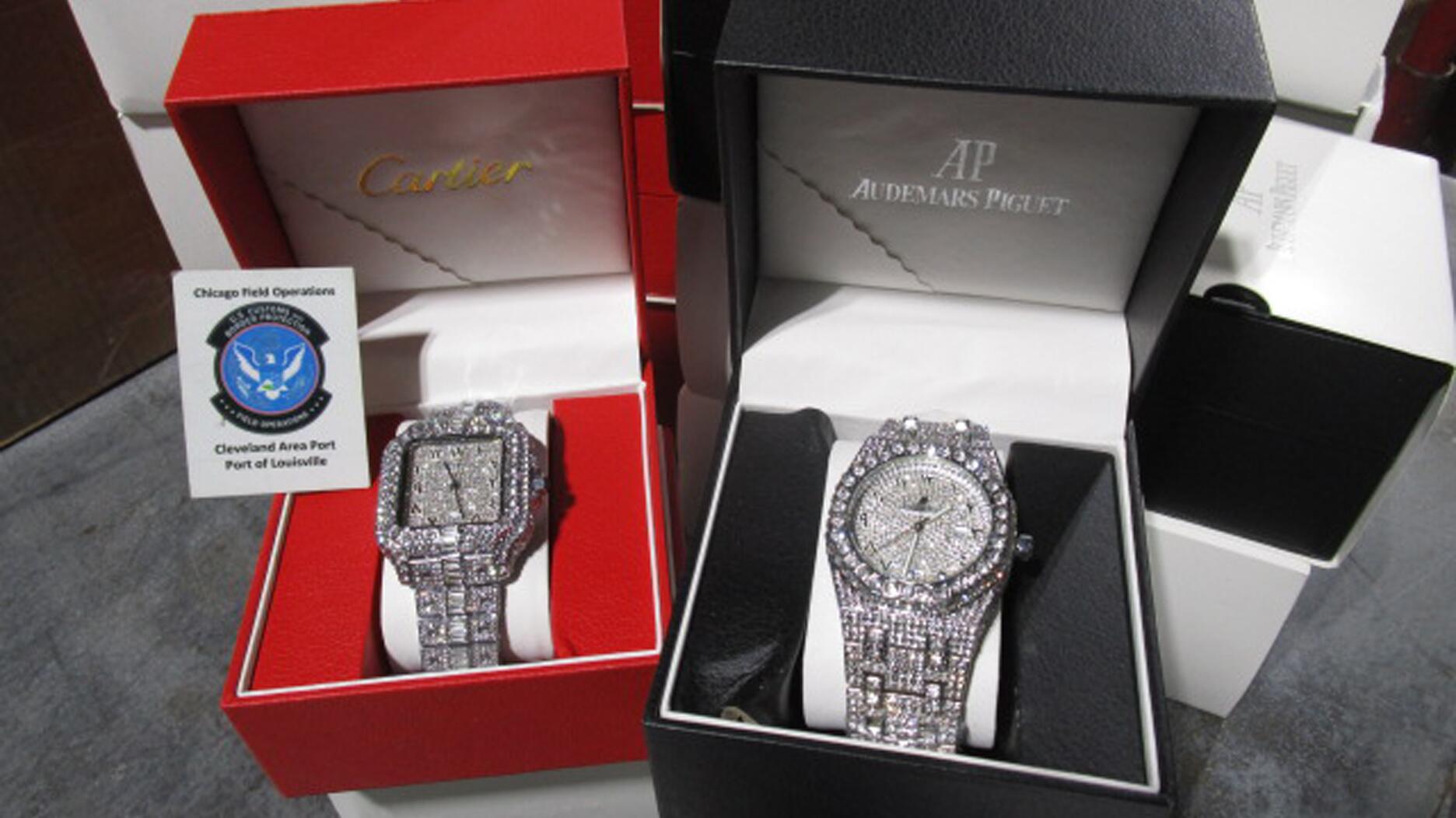Consumers shared concerns about prices, inflation, tariffs, trade, and politics in the survey’s write-in response section.
How Many Jewelry Stores Have Been Hit In Nationwide Rioting?
Jewelers Security Alliance’ John Kennedy answered this question and many more in a special webinar on store security held Tuesday.
New York—With the country gripped by ongoing protests over the death of George Floyd, Jewelers’ Security Alliance President John J. Kennedy offered insights Tuesday on keeping jewelry stores safe amid rioting and looting.
As part of a Jewelers of America webinar series moderated by National Jeweler Editor-in-Chief Michelle Graff called “My Next Question,” Kennedy spoke on how serious the looting threat is nationwide, as well as how to respond.
Here are several major takeaways.
How Rampant Is Looting Now?
As of Tuesday, Kennedy reported at least 115 stores hit through some combination of looting or rioting in 22 states, calling the risk “very severe.”
“I haven’t seen a set of incidents as broad as this and in as many cities as this and that’s hit as many jewelry stores,” he said.
“You’d have to go back to the 1960s to see such widespread civil disturbance,” Kennedy said, referring to riots that erupted across the United States as part of the civil rights movement.
Where Is the Risk?
Kennedy noted that current rioting and looting has been concentrated in major cities where large protests are underway.
“Unfortunately … demonstrations that start peaceful can turn violent,” he said.
“What we hear and observe is that the vast majority of people demonstrating are not there for criminal purposes. There is a relatively small number of people committing crimes, breaking into stores or whatnot. You hear stories of crowds being infiltrated with anarchists or gang members and they try to mix in with the legitimately angry demonstrators.”
Jewelers should pay attention to all news sources at their disposal, from TV, social media and reports from local law enforcement to see if their town is expecting a demonstration.
If it is, it’s time to close up shop.
“If any [protest/demonstration] is going to happen, you’re better off closing,” he said, “because people won’t be shopping anyway.”
How Much Damage Is Being Done to Jewelry Stores?
While looting is a major risk, the good news is that jewelers have been preparing themselves, so few have lost merchandise, Kennedy explained.
And that is the most important thing jewelers can do to stem losses—put all merchandise away.
“The most important thing a jeweler can do is have product locked up in a safe or vault. Leaving product out is the magnet that makes it more likely you’ll be hit.”
Even low-value merchandise should be stashed in
“We haven’t seen attempts at safe entry or removal of safes,” said Kennedy.
“[In the Los Angeles riots] in 1992, we saw a number of instances where people removed safes. We haven’t seen that here; people aren’t going in with tools to get into the safe.”
Take things a step further by putting up signs stating, “No Jewelry Inside” or “No Merchandise Inside.”
To Guard or Not to Guard?
The worst thing a jeweler can do is to stay in their store to physically guard it.
“We’ve seen 30 people going in stores,” at one time, Kennedy noted. “If you’re there, you’re going to be hurt and bad things are going to happen.”
The same can go for hired guards.
Kennedy said in St. Louis at about 2:30 am on Tuesday, a retired police captain hired as a guard at a jewelry and loan store was shot to death.
“That’s the ultimate thing that can happen to you if you’re trying to defend your store. We’ve seen multiple instances of guns fired into stores so trying to protect yourself is extremely dangerous.”
Jewelers are better off not guarding their stores, or even hiring an overnight security guard.
If the jeweler or the guard shoots someone invading the store, the legal consequences could be dire, with possible civil or criminal liability depending on each state’s laws, regardless of what the person intruding was doing.
“Let your insurance handle it for you,” said Kennedy.
Should I Board Up My Store?
If jewelers expect a demonstration or protest in their area, boarding up a store is one more layer of defense against looters.
“47th Street is completely boarded up,” he said, referring to New York City’s Diamond District. “They didn’t really suffer the type of glass breakage and entry that happened elsewhere. The boarding up is helpful.”
“It’s not a panacea; if people want to rip it down [they can], but it makes it somewhat less likely that you’re hit.”
Kennedy said where he lives in Connecticut, prominent jewelry stores were boarded up pre-emptively, even without reports of coming protests.
What Else to Take From Your Store
Jewelers need to have some form of document backup, whether that’s physical copies of important papers in a second location, or a daily backing-up on the cloud, Kennedy said.
Inventory records are necessary for insurance purposes, for example.
Other important documents to consider are diamond grading reports, even if the diamonds are securely stowed in a safe or vault, plus “a list of reputable contractors—glass, construction, smoke clean-up, industrial clean-up,” to help get a store back on its feet if it’s affected by rioting or looting.
Also, be sure to have a way to contact all store employees.
How to Immediately React to Looting
Once riots are done and the threat has passed, “Immediately call your insurance agent and let them know you have a loss and let them guide you on how to proceed,” Kennedy said.
This is when retailers also will want to call a security guard so no one can enter the store while broken doors and window are being repaired.
With police currently inundated, jewelers can collect evidence themselves, depositing it in a paper bag labeled with details, like the date, time and location of the store from which it was retrieved. Evidence could be broken glass with blood on it, for example.
“People leave behind all kinds of things,” said Kennedy. “You’re not going to get forensics to respond in the middle of a riot so you’re better off doing it yourself.”
What’s Next?
“I believe that we will probably be seeing a more severe police response very soon,” said Kennedy, whether that’s increased police response, or more National Guard and military intervention.
“I don’t think [rioting/looting] will stop tonight or tomorrow but if I had to put a finger on it, it could end by the weekend or end of the weekend.”
While current situations might feel extreme, Kennedy was quick to point out that civil unrest will surely happen again while underlying social issues remain unresolved.
“The [current] curfew in New York is the first imposed since 1943. The reason for the imposition of the curfew at that time was because a white policeman in Harlem shot a serviceman who was black and it set off a riot. We’re not going to see the end of this in a long-term sense any time soon.”
The Latest

In February 2026, the auction house will move its headquarters to the former Steinway Hall, a neoclassical landmark on Billionaires’ Row.

The new show will take place Jan. 23-25, 2026.

How Jewelers of America’s 20 Under 40 are leading to ensure a brighter future for the jewelry industry.

The former BHP Billiton leader and Gemfields chairman is remembered for his influential leadership throughout his 50-year mining career.


The LVMH-owned brand has partnered with the costume design union to revamp its award for 2026.

The luxury titan inked a deal to acquire an initial minority stake in the jewelry manufacturer with a pathway to full ownership by 2032.

Roseco’s 704-page catalog showcases new lab-grown diamonds, findings, tools & more—available in print or interactive digital editions.

The company’s curation of unsigned vintage and estate jewelry debuted at the Bloomingdale’s in Costa Mesa, California.

Helzberg’s Chief Retail Officer Mitch Maggart shared details about its tests of a new store concept rooted in an elevated luxury experience.

Jewelers of America execs and National Jeweler editors discuss tariffs, the sky-high gold price, and the engagement that broke the internet.

The luxury goods company said founder Ippolita Rostagno will remain at the brand’s helm.

Laura Burdese, who joined the Italian luxury brand in 2022, will take on the role in July.

The National Jeweler editors revisit the most noteworthy industry happenings and design trends from 2025.

Need a gift for the cat lover who has everything? Look no further than our latest Piece of the Week.

It purchased the “Grosse Pièce,” an ultra-complicated Audemars Piguet pocket watch from the ‘20s, for a record-breaking price at Sotheby’s.

The lab-grown diamond grower now offers custom engagement and fashion jewelry through its Kira Custom Lab Jewelry service.

Chandler got his start at Michelson Jewelers and has served as DCA president and CEO since 2001. He will retire at the end of the month.

The boutique is slated to open this week inside Terminal 8, offering pre-owned Rolex watches and more to international travelers.

Sponsored by Digital Monitoring Products

The special-edition egg pendant ingested in a New Zealand jewelry store was recovered after a six-day wait.

Associate Editor Natalie Francisco plays favorites with Piece of the Week, selecting a standout piece of jewelry from each month of 2025.

The “Love and Desire” campaign is inspired by the magic that follows when one’s heart leads the way, said the brand.

Two awardees will receive free tuition for an educational course at the Swiss lab, with flights and lodging included.

Berta de Pablos-Barbier will replace Alexander Lacik at the start of January, two months earlier than expected.

Sotheby’s held its first two jewelry sales at the Breuer building last week, and they totaled nearly $44 million.

Winners will receive free registration and lodging for its fourth annual event in Detroit.



























